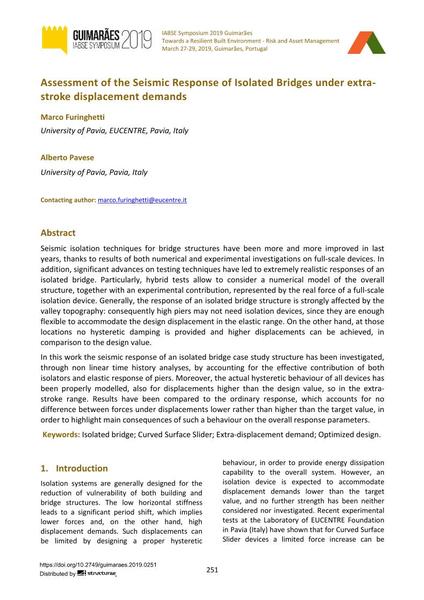|
Abstrakt:
|
Seismic isolation techniques for bridge structures have been more and more improved in last years, thanks to results of both numerical and experimental investigations on full-scale devices. In addition, significant advances on testing techniques have led to extremely realistic responses of an isolated bridge. Particularly, hybrid tests allow to consider a numerical model of the overall structure, together with an experimental contribution, represented by the real force of a full-scale isolation device. Generally, the response of an isolated bridge structure is strongly affected by the valley topography: consequently high piers may not need isolation devices, since they are enough flexible to accommodate the design displacement in the elastic range. On the other hand, at those locations no hysteretic damping is provided and higher displacements can be achieved, in comparison to the design value. In this work the seismic response of an isolated bridge case study structure has been investigated, through non linear time history analyses, by accounting for the effective contribution of both isolators and elastic response of piers. Moreover, the actual hysteretic behaviour of all devices has been properly modelled, also for displacements higher than the design value, so in the extra- stroke range. Results have been compared to the ordinary response, which accounts for no difference between forces under displacements lower rather than higher than the target value, in order to highlight main consequences of such a behaviour on the overall response parameters.
|

